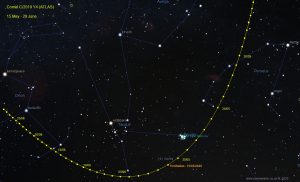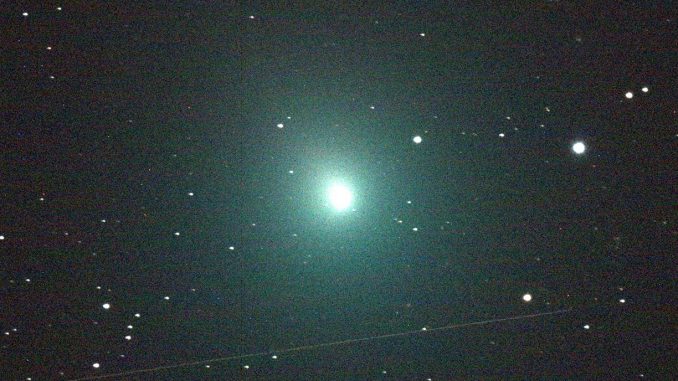
[UPDATE 07-Apr-2020]: Comet C/2019 Y4 (ATLAS) is breaking apart.
Discovered on 28 December, 2019, Comet ATLAS was discovered by the Asteroid Terrestrial-impact Last Alert System survey in Hawaii. The robotic astronomical survey is an early warning system designed to detect smaller near-Earth objects a few weeks and days before they pass close to or impact the Earth. This comet has sparked some attention as for the first time in years, we might have a comet that will put on a spectacular show.
The comet is near-parabolic and has a similar orbit to that of the Great Comet of 1844. This has lead to speculation that C/2019 Y4 is a fragment of the same parent body as the 1844 comet.
Astronomers have endured something of a ‘bright comet drought’ over the past few years. To find the last naked eye comet visible in the Northern Hemisphere, you would have to go right back to March 2013 when Comet PanSTARRS put on a show just after sunset low on the western horizon. It reached magnitude +1 making both nucleus and tail an easy naked target after sunset.
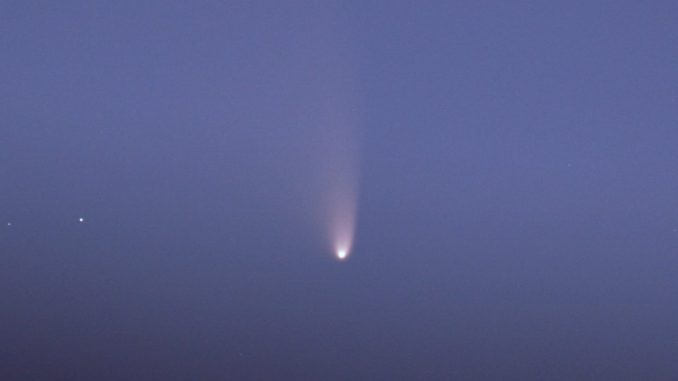
For the last truly ‘great’ naked eye comet, you would have to go back almost quarter of a century when the world was treated to Comet Hale-Bopp which was visible throughout 1996-1997 for a period of about 18 months. Due to both its brightness, easy viewing location and longevity, this comet captured the imagination of observers around the whole of the Northern Hemisphere (most especially through the balmy summer months of 1997).
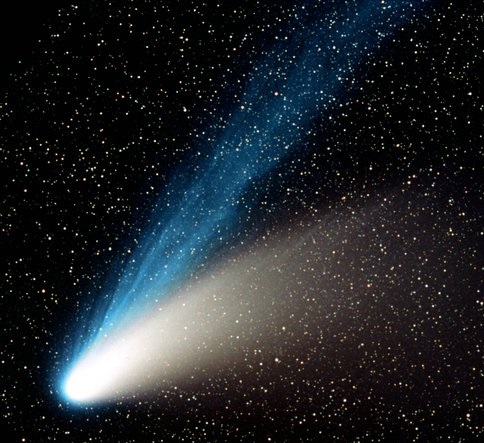
Comet Atlas Current Visual Magnitude (Brightness) : +8
Comet Atlas Current Location: Ursa Major
How bright will Comet ATLAS get?
At the time of writing comet C/2019 Y4 is at 8th magnitude making the object easily visible in modest-sized backyard telescopes as a fuzzy ball. In good conditions and dark skies, the comet should also be visible in supported binoculars. Recent observations have surprised astronomers as the comet has rapidly increased in brightness since its discovery in December. Back then, the object was a desperately faint magnitude 20th magnitude in the constellation of Ursa Major at a distance of 273 million miles.
Most would agree that this is typical behaviour for comets as they approach the Sun. Originally, predictions were that Comet Atlas would peak at somewhere around magnitude 9. This would of meant yet another mediocre comet to be noticed only by telescope owners.
However, things changed when astronomers realised the incredible rate of brightness increase. Almost day-by-day rapid changes have been observed and we are now at a stage where the comet is 600 times more brighter than predicted at this point. Another feature is the comet’s apparent size in the sky given its distance. Currently, the icy space object is around 20 arcminutes wide (the full Moon is 30 arminutes). This means that the comet has a very large coma.
Given that the comet’s orbit follows that of the great comet in 1844 and has an orbital period of over 5000 years, the comet will certainly have some fresh, untouched icy material in there just waiting to be warmed up by our Star.
With comet peak brightness predictions being a dark art, it comes as no surprise that current predictions are somewhat varied. We’ve heard anything from magnitude +2 to a spectacular magnitude -11 which would take the comet way past the brightness of Venus. It would make C/2019 Y4 the brightest comet since records began.
Comet ATLAS Closest Approach and Perihelion
Comet C/2019 Y4 will reach Perihelion (closest approach to the Sun) on 31 May, 2020 at a distance of 0.25 AU from the sun or 23.5 million miles. This is exceedingly close and the comet is certainly expected to react to this in an extreme way.
The comet will reach closest approach to the Earth just two days earlier on Saturday 23, May at a distance of 72 million miles.
Over Optimistic?
So, everything is geared up for a spectacular show right? Well, not exactly. As with all comets, unpredictable things can happen. This comet’s rate of increase in brightness is somewhat troubling to some astronomers. It’s a seemingly impossible rate of brightness to maintain all the way to Perihelion. Given the fuzzball’s predicted close proximity to the Sun in May, it could just fizzle out and die. Comet ISON fell victim to this in 2013 with a lot of media hype in the build up to perihelion. Astronomers then keenly watched as the object disintegrated as it passed the sun.
How to view Comet ATLAS
From January to March 2020, comet ATLAS is located in the constellation of Ursa Major which is great news for northern hemisphere observers. This area of the sky is circumpolar meaning Comet ATLAS will remain above the horizon.
Through the end of March in to April the comet will move in to Camelopardalis and stay steady. It is possible that by mid-April, the comet will reach naked eye brightness but this is anybody’s guess. Until such time, the object is best viewed in telescopes or binoculars using the finder charts below to locate the comet. For photographers out there, this is an ideal target although take note of it’s large size (especially if an elongated tail grows).
Comet ATLAS Finder Charts
20 March – 28 June
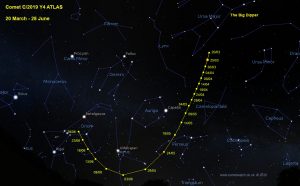
Detailed Chart – March – April 2020
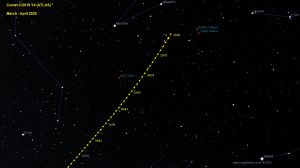
Detailed Chart – 25 April – 20 May
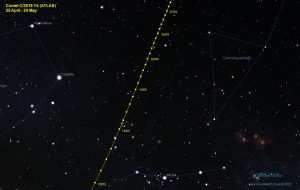
Detailed Chart – 15 May – 29 June (Including Perihelion)
